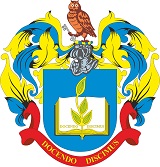Please use this identifier to cite or link to this item:
http://46.63.9.20:88/jspui/handle/123456789/453| Title: | Blended Learning in English for Specific Purposes. |
| Authors: | Fanenshtel, N. V. |
| Keywords: | Teaching English Specific Purposes Blended Learning |
| Issue Date: | 2017 |
| Publisher: | Київ. : МЦНД |
| Citation: | Fanenshtel N. V. Blended Learning in English for Specific Purposes. Теорія і практика сучасної науки (частина ІІ): матеріали ІІ Міжнародної науково-практичної конференції м. Київ, 15-16 червня 2017 року. Київ. : МЦНД, 2017. С. 48–50. |
| Abstract: | The article deals with Blended Learning in English for Specific Purposes. Teaching English for Specific Purposes (ESP) differs from teaching English as a Second Language (ESL). This difference is closely connected with ESP students’ learning objectives. Mostly they are highly motivated people as they work with language materials which they find interesting and useful in their professional communication and performing particular job-related functions. The more students focus on the meaning and functioning of the language that they will use in their fields of specialty or jobs, the more they are motivated to attend their classes. Thus, ESP learning is more like acquiring language in the subject-matter context than learning isolated grammar and language structures. In this view, ESP teacher is responsible for selecting, designing and organizing course materials, and for creating a learning environment which supports the students. |
| URI: | http://46.63.9.20:88/jspui/handle/123456789/453 |
| Appears in Collections: | Кафедра іноземних мов |
Files in This Item:
| File | Description | Size | Format | |
|---|---|---|---|---|
| 6_Фаненштель_Blended in ESP.pdf | 243,95 kB | Adobe PDF |  View/Open |
Items in DSpace are protected by copyright, with all rights reserved, unless otherwise indicated.
